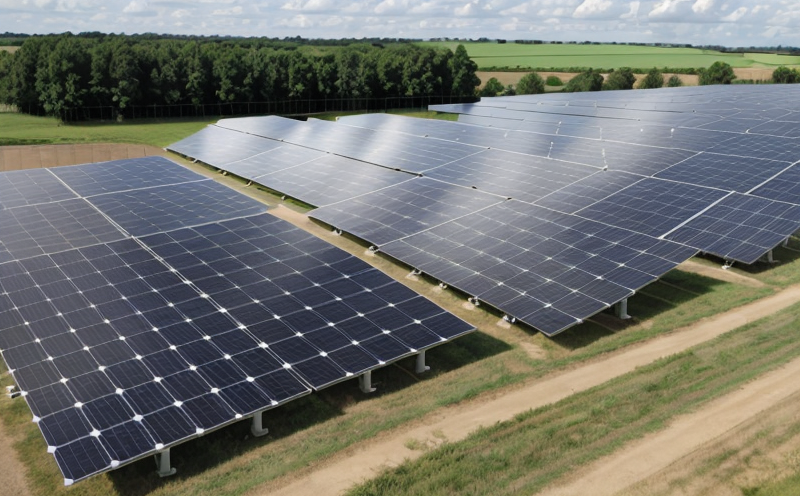ASTM E2105 Infrared Thermography Testing of Renewable Facilities
The ASTM E2105 standard specifies the procedures and requirements for infrared thermographic inspections to evaluate the performance, integrity, and safety of renewable energy systems. This service is crucial in identifying potential issues early before they escalate into major failures or costly repairs.
Infrared thermography (IRT) leverages non-contact temperature measurement techniques to detect thermal anomalies that may indicate underlying problems within solar photovoltaic (PV) arrays, wind turbine blades, and other renewable energy systems. By using IRT, facilities can ensure optimal operational efficiency while minimizing downtime and associated costs.
For solar PV installations, the primary focus is on identifying hotspots which could lead to reduced power generation or even complete module failure due to overheating caused by shunts, poor connections, or manufacturing defects. In wind turbines, IRT helps in detecting cracks or delamination within blades that can compromise structural integrity and potentially cause catastrophic failures.
The ASTM E2105 standard provides specific guidelines on how to perform these inspections effectively. It includes detailed instructions for setting up the equipment, choosing appropriate wavelengths of infrared radiation, selecting suitable emissivity values based on surface materials, and interpreting thermal images accurately.
Properly conducted ASTM E2105 testing not only enhances reliability but also supports compliance with relevant regulatory requirements such as ISO 9001:2015 for quality management systems or OSHA standards ensuring safe working environments. By adhering strictly to this standard, operators can demonstrate their commitment to maintaining high standards of safety and efficiency across all aspects of renewable energy facilities.
In summary, ASTM E2105 infrared thermography testing plays a vital role in the maintenance and optimization of renewable energy systems by providing early detection capabilities for potential issues. This proactive approach ensures extended equipment lifespan, improved performance metrics, reduced risk profiles, enhanced operational reliability, and ultimately contributes towards achieving sustainable goals set forth by organizations involved in green energy initiatives.
Why It Matters
Implementing ASTM E2105 infrared thermography testing is essential for several reasons. Firstly, it allows for preventive maintenance rather than reactive repairs, leading to significant cost savings over time. Secondly, it helps in maintaining the highest levels of safety standards as per international guidelines like ISO 9001:2015 and OSHA regulations.
- Cost Efficiency: Early detection of faults through IRT prevents costly replacements or emergency repairs that arise from unexpected failures.
- Safety Compliance: Ensures adherence to industry best practices, thereby protecting workers' health and safety.
- Performance Optimization: Identifies inefficiencies in system operation allowing for targeted improvements which can enhance overall performance metrics.
In essence, ASTM E2105 testing serves as a cornerstone practice supporting the sustainability agenda of renewable energy systems. It fosters an environment where continuous improvement is encouraged, ensuring that every component operates at its peak capacity while reducing environmental impact through efficient resource utilization.
Industry Applications
The application of ASTM E2105 infrared thermography testing spans across various sectors within the renewable energy industry. Solar power plants benefit significantly from this technique by identifying hotspots on photovoltaic panels, which are critical for maximizing electricity output. Wind farms also use IRT to inspect turbine blades for signs of damage or wear that could compromise structural integrity.
Besides these two major segments, other applications include biomass energy facilities where IRT aids in assessing the condition of boilers and heat exchangers; geothermal projects utilizing it to monitor fluid flow rates and detect leaks in underground pipelines. Additionally, hybrid systems combining multiple renewable sources like solar-wind installations often incorporate ASTM E2105 testing into their maintenance schedules.
Overall, ASTME2105 infrared thermography testing offers a versatile solution tailored specifically for the unique challenges faced by each type of renewable energy system. Its ability to provide precise diagnostic information ensures that all components are functioning optimally, contributing towards achieving long-term sustainability goals.





